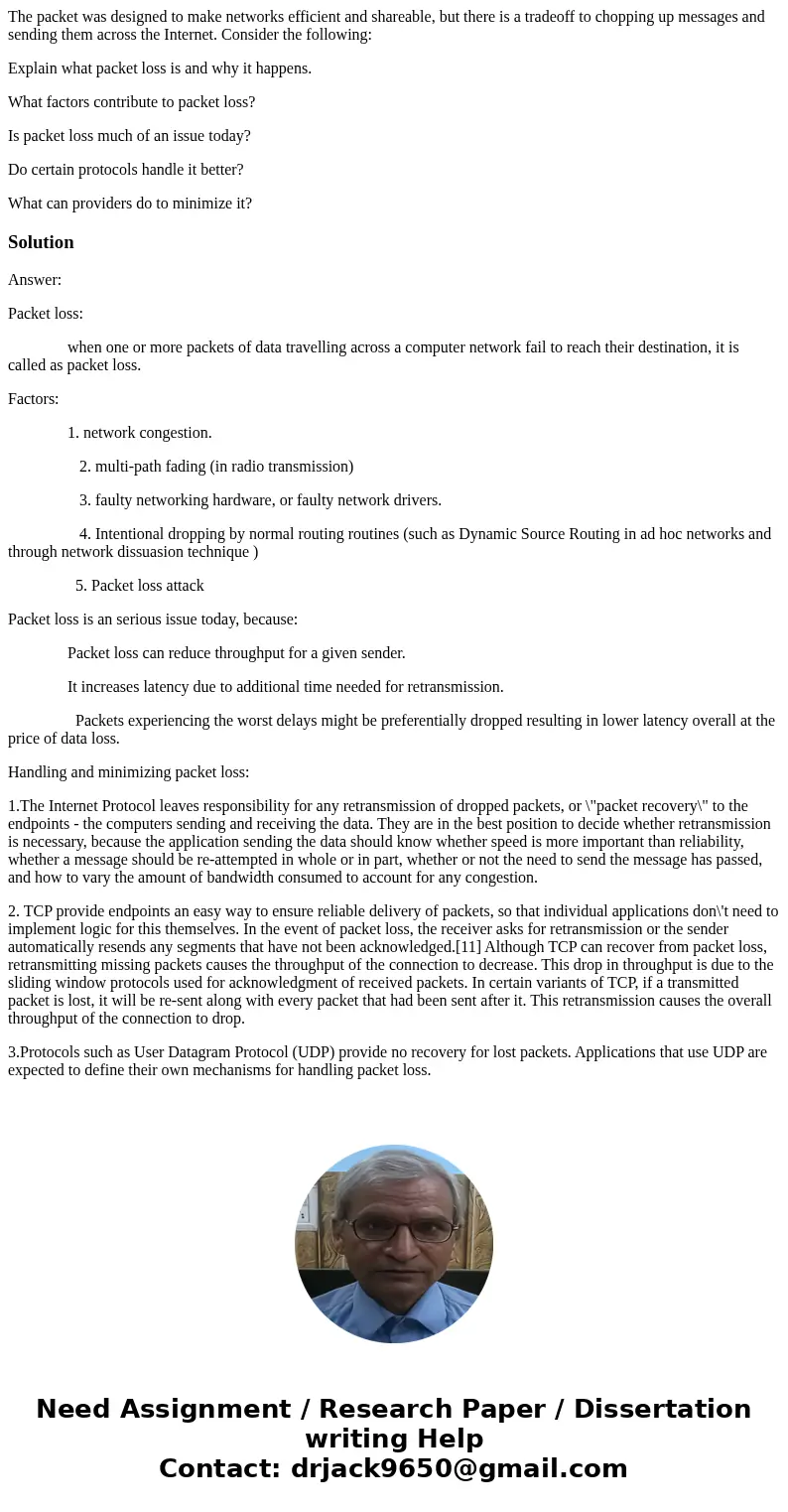The packet was designed to make networks efficient and share
The packet was designed to make networks efficient and shareable, but there is a tradeoff to chopping up messages and sending them across the Internet. Consider the following:
Explain what packet loss is and why it happens.
What factors contribute to packet loss?
Is packet loss much of an issue today?
Do certain protocols handle it better?
What can providers do to minimize it?
Solution
Answer:
Packet loss:
when one or more packets of data travelling across a computer network fail to reach their destination, it is called as packet loss.
Factors:
1. network congestion.
2. multi-path fading (in radio transmission)
3. faulty networking hardware, or faulty network drivers.
4. Intentional dropping by normal routing routines (such as Dynamic Source Routing in ad hoc networks and through network dissuasion technique )
5. Packet loss attack
Packet loss is an serious issue today, because:
Packet loss can reduce throughput for a given sender.
It increases latency due to additional time needed for retransmission.
Packets experiencing the worst delays might be preferentially dropped resulting in lower latency overall at the price of data loss.
Handling and minimizing packet loss:
1.The Internet Protocol leaves responsibility for any retransmission of dropped packets, or \"packet recovery\" to the endpoints - the computers sending and receiving the data. They are in the best position to decide whether retransmission is necessary, because the application sending the data should know whether speed is more important than reliability, whether a message should be re-attempted in whole or in part, whether or not the need to send the message has passed, and how to vary the amount of bandwidth consumed to account for any congestion.
2. TCP provide endpoints an easy way to ensure reliable delivery of packets, so that individual applications don\'t need to implement logic for this themselves. In the event of packet loss, the receiver asks for retransmission or the sender automatically resends any segments that have not been acknowledged.[11] Although TCP can recover from packet loss, retransmitting missing packets causes the throughput of the connection to decrease. This drop in throughput is due to the sliding window protocols used for acknowledgment of received packets. In certain variants of TCP, if a transmitted packet is lost, it will be re-sent along with every packet that had been sent after it. This retransmission causes the overall throughput of the connection to drop.
3.Protocols such as User Datagram Protocol (UDP) provide no recovery for lost packets. Applications that use UDP are expected to define their own mechanisms for handling packet loss.

 Homework Sourse
Homework Sourse